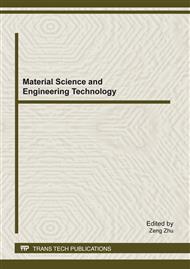p.3
p.10
p.17
p.26
p.33
p.38
p.45
p.52
The Flow Characteristics Analysis of Transonic around Delta-Wing to Separate Water from Natural Gas
Abstract:
The changes in flow channel area and convergence-expanding nozzle help to flow rate of natural gas to the sound speed, also increase diameter to accelerate flow velocity and finally reach transonic flow condition. At this point, the temperature drop makes saturated water in natural gas condenses into droplets, generates swirl around the delta-wing, realize gas-water separation. This paper concentrates on Flent6.1 software process gas flow around a delta wing simulation, explains expansion angle and attack angle of delta-wing, determines a reasonable delta-wing attack angle is 10°, pipeline expansion angle is 0.29°, and obtains velocity vector, mach number, total pressure, static temperature and other flow field details of the attack angle and expansion angle, which lay foundation for production and application of the technology.
Info:
Periodical:
Pages:
26-32
Citation:
Online since:
February 2012
Authors:
Keywords:
Price:
Сopyright:
© 2012 Trans Tech Publications Ltd. All Rights Reserved
Share:
Citation:


